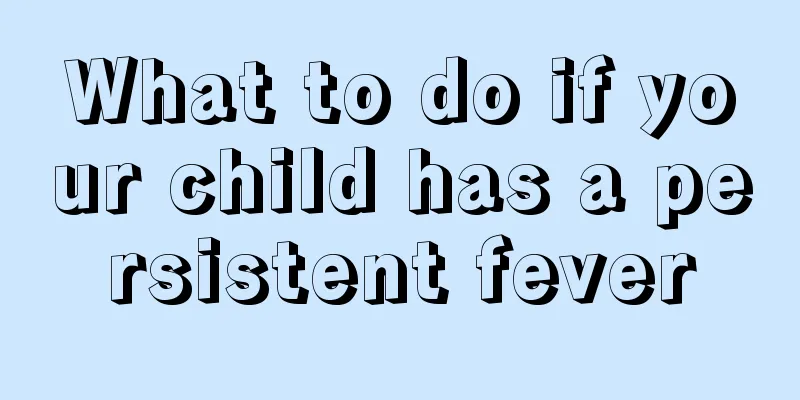What are the symptoms of vitiligo in children

|
It is the common wish of many parents that their children can grow up healthily and happily. Every child’s health problem will touch the hearts of parents. Among them, vitiligo is a relatively common skin disease. Although it is painless and itchy, serious development will change the appearance and it is also very difficult to treat. However, if you master the symptoms of the disease, you can discover and treat the disease in the early stages. Let’s take a look at the symptoms of vitiligo in children. What are the symptoms of vitiligo in children 1. The number of depigmented spots in children with vitiligo is generally relatively small, approximately 1-2 pieces, and most of them appear on exposed skin. Except for the loss of pigmentation, the skin in the affected area is the same as the surrounding normal skin, with no changes such as inflammation, desquamation or atrophy. 2. There is generally no itching, and even if there is itching, it is relatively mild. This is one of the early symptoms of vitiligo in children. 3. When you are not sure whether the child has other skin diseases, you should first consider vitiligo in children. The symptoms of early vitiligo in children are white spots with raised edges, which also have their own significant characteristics. 4. Among children, the early symptoms of vitiligo are distributed in the dermatomes in 17% to 9% of cases, and localized and sporadic in 30% to 50%. There is data showing that approximately 41.3% of children with segmental vitiligo are younger than 10 years old. 5. Changes in condition: The age at which skin lesions first occur has little impact on the severity of vitiligo. Since the early symptoms of vitiligo in children are mostly staged, more children with segmental vitiligo are in a stable state than in adults. For most children with segmental vitiligo, the condition can be relatively stable one year after the onset of the disease. Children suffering from vitiligo should pay attention to the following points: Seek timely treatment and do not seek medical treatment without proper supervision. Once parents find that their children have symptoms of vitiligo, they should send their children to a professional hospital for treatment in time, assist doctors in finding the cause of the disease, and adopt targeted treatment plans. Do not use folk remedies, traditional Chinese medicines or even special-effect medicines in your eagerness to seek medical treatment, which will delay treatment and aggravate the condition. Reduce harm and use medications with caution. There are many drugs for the treatment of vitiligo at present, but due to many reasons, the therapeutic effects of the drugs are mixed. Some drugs and methods are not suitable for children with vitiligo, such as immunosuppressants, anti-tumor drugs, and long-term, large-area topical corticosteroids, which will cause side effects on the children's bodies. Therefore, depending on the condition of the disease, you can choose ultraviolet radiation, traditional Chinese medicine, immunomodulators and other medicines with fewer side effects. Patience is required during treatment, and persistence in treatment is the key. The treatment of vitiligo generally takes a long time, so patients must be patient during the treatment process and not rush. They should not interrupt treatment or frequently change the treatment just because no treatment effect is seen in the early stage. Treatment must be carried out under the guidance of a doctor. Strengthen care during treatment. The onset of vitiligo in children is closely related to their own immunity. During the treatment process, parents should pay close attention to their children's diet and pay attention to the balanced intake of nutrition. They should eat more high-protein, high-energy, and high-vitamin B foods, supplement with a variety of trace elements in moderation, and avoid eating foods rich in vitamin C and irritating foods such as lamb and seafood. It is necessary to observe the changes of vitiligo on the surface of your body in time in order to carry out the next treatment plan. Vitiligo should be detected and treated early. In order to prevent vitiligo from spreading on a large scale, you should go to a regular hospital for treatment. If you understand the symptoms of the disease, you can discover and treat it promptly. The above is an introduction to the symptoms of vitiligo in children. After understanding, we know that vitiligo usually causes a small area of skin to turn white. Once discovered, you should go to the hospital for examination and diagnosis in time, and receive treatment in time. |
<<: How to treat anemia in children?
>>: Causes of retinal hemorrhage in premature infants
Recommend
What should babies eat if they have bad breath due to internal heat?
It is a very common situation for babies to get a...
The role of trace element testing, how to check whether children are deficient in trace elements
If possible, of course every parent wants to give...
How to correct children's skeletal protrusions
Children's dental problems are often a headac...
Prevention of albinism in children
Childhood albinism is mainly a genetic disease, a...
Symptoms and treatment of dysentery in children
Dysentery is a common gastrointestinal disease in...
What should I do if my child develops herpes?
When a baby develops herpes, it is usually caused...
What are the early symptoms of tuberculosis in children?
In fact, children are also very likely to suffer ...
What to do if your newborn loves to fart
Parents whose newborns fart a lot will be quite d...
Is there yellow in the underwear of a three-year-old girl?
If a three-year-old girl's underwear has yell...
Can children eat Lingzhi?
Ganoderma lucidum is a very precious Chinese medi...
How to check for roundworms in children
Many children often eat unclean things, which wil...
The harm of babies eating and playing at the same time
Some parents spoil their children and let them pl...
Matters Needing Attention for Sleeping Time of Full-Month Babies
In fact, for babies who have just been born, they...
What should I do if my baby has green diarrhea?
In the process of raising and feeding a child, so...
What are some folk remedies for children’s cough?
Coughing may not be a serious disease for adults....









